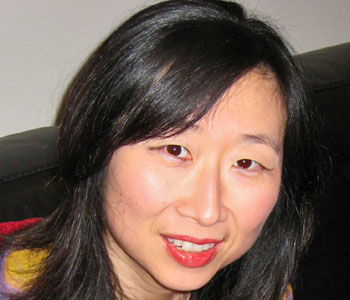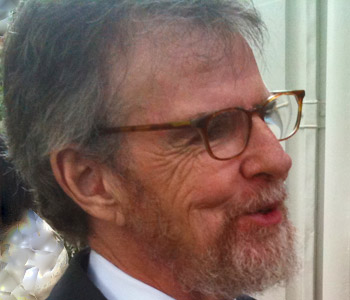Brooks E. Hefner
The Word on the Streets: The American Language of Vernacular Modernism
University of Virginia Press
296 pages, 6 x 9 inches
ISBN 978 0813940403
The Word on the Streets is a book, first and foremost, about slang: how slang and vernacular language gain purchase as experimental and self-conscious forms in American literature. The book charts how a variety of popular genres underwent a transformation in the early twentieth century, as authors began to see slang as a way of reformulating their respective genres’ aesthetic practices. This reformulation, I argue, is a part of what we understand as literary modernism, that multifaceted movement that famously sought to “make it new” in all aspects of the arts. Central to these modernist goals was the self-conscious alienation of language, which could take forms from stream of consciousness narration to the impenetrable incorporation of ancient languages and neologisms.
Modernism also defined itself against commercial art (or “mass culture” as critics like Andreas Huyssen would have it), though scholars in recent years have been quick to note that even these difficult texts participated in a specialized market. So, it’s become easy to see how modernist giants like Gertrude Stein or William Faulkner crossed the line into commercial zones. But scholars have been reluctant to imagine any of that “mass culture” as crossing the line into self-conscious literary experimentation. This is where The Word on the Streets comes in. In the early twentieth century, popular writers in a wide variety of genres began to understand slang and vernacular language as a way to experiment with new forms of representation, to raise questions about knowledge, and to challenge entrenched boundaries based on race, class, and ethnicity.
The “vernacular modernism” of my subtitle refers to this loose aggregation of writers, working in wildly different popular traditions, who turn to slang and vernacular language(s) to enact a kind of experimental transformation within their received genres. This practice is contemporaneous with a growth of scholarly and popular interest in the so-called “American language” (best exemplified by H.L. Mencken’s magnum opus of the same name). But it goes far beyond any kind of linguistic standardization: multi-ethnic and cross-class slang was a moving target during this period, and Mencken claimed that this “American language” was defined by its “steady reaching out for new and vivid forms.”
The vernacular modernist writers I examine include humor writers, crime fiction writers, Jewish American memoirists, and African American urban novelists. They were published in middlebrow and lowbrow venues for popular audiences, but nearly every one of them grazed the boundaries of capital-M Modernism. In The Word on the Streets I hope to give these writers their due and to shatter the (often unspoken) presumption in modernist studies that popular writers are not really worthy of close formalist analysis. I also hope to provide a way for thinking about American modernist practices that cuts across traditional boundaries of race, class, and ethnicity.
The Word on the Streets enters in a rather thorny place in modernist studies. In my mind—and I make the claim in the book—the field of modernist studies has been much more willing to move beyond the literary canon in theory than it has in practice. As a result, modernist scholars are still writing primarily about the same dozen or so authors that have been at the center of the study of literary modernism for decades. Occasionally these studies include a chapter with a new or relatively unknown writer, but by and large these studies remain firmly rooted in familiar names and texts. The big idea behind the method of The Word on the Streets is this: what if we took these post-canonical notions seriously and treated popular and non-canonical fiction as if it had its own self-conscious and self-reflexive aesthetic? How might granting popular and middlebrow writers this kind of aesthetic independence alter our understanding of American modernism as a complex literary practice?
This approach meant a return to a somewhat old-fashioned notion of modernism, a formalist attitude that emphasizes style and aesthetic distance rather than more common contemporary approaches that seek to understand modernist culture almost exclusively in its social and political complexity. It also meant throwing off some of the deeply entrenched prejudices against popular culture as compromised by its commodity status, and therefore part of an insidious culture industry against which modernism defines its own independence. This wasn’t all that hard to do because the writers I discuss here wrote, often explicitly, about their own writing methods and styles. For example, Jewish American writer Anzia Yezierska described the way that “Foreigners bring new color, new music, new beauty of expression to worn-out words. The foreign mind works on an old language like the surging leaven of youth. It rekindles and recreates our speech. Trite words, stale phrases, break up into new rhythms in the driving urge to express more vitally the rush of new experience, the fire of changing personality.” It’s not difficult to see, in Yezierska’s statement—from her review of another Jewish American writer’s memoir—both the concerns and anxieties of literary modernists: how do we make language new? How do we create a form of representation suited to the experiences of twentieth century modernity? For Yezierska, the hybrid speech of immigrants was precisely the place to look for these new modes of representation.
Canonical modernist figures certainly understood this: the writers I feature in this study moved across publishing contexts and zones of cultural prestige quite smoothly. Drawing on a recent emphasis on periodicals as central to modernist writing, I show how these writers, frequently relegated to the margins, were actually published, advertised, and praised alongside more familiar modernist figures in magazines both big and little. This attention to periodical and publishing history helps to recreate a more vibrant and complex picture of American modernism than we have previously been able to acknowledge.
The best entry point for the book is probably the introduction. I use that rather lengthy section to demonstrate the permeability of modernist boundaries and to lay out my argument for exactly what vernacular modernism is and how it works: how it relates to modernist writing and how it differs from popular nineteenth century dialect writing that understood language as marking strict social hierarchies. I also use the introduction to highlight the importance of popular linguistics in the era, a legacy of Mencken’s American Language. Readily incorporating “foreign words and phrases” (in Mencken’s words), this fast-moving, constantly innovating American language meant that slang dictionaries and word-lists (produced at an astounding rate during this time) were likely obsolete by the time they reached publication.
The introduction also situates this vernacular modernism within what I call the political economy of modernist reading. Using Anita Loos’s Gentlemen Prefer Blondes, I track the ways in which this text moved with ease across a variety of boundaries between highbrow and middlebrow readerships, noting that its impact seems to derive in part from this very motion.
If a reader is looking for a case study to sink her teeth into, then I would suggest turning to the chapter on hard-boiled crime fiction. With a focus on the well-known detective writer Dashiell Hammett and his lesser-known antecedent Carroll John Daly, it teases out quite a few of the themes and methods that run throughout the book. Linking the self-conscious development of the hard-boiled aesthetic in the pulp magazine Black Mask to the vogue for underworld dictionaries and the semi-canonization of crime writers like Dashiell Hammett, this chapter makes an argument for hard-boiled writers working in a vernacular modernist mode that reflects the power and the politics of vernacular language and slang. It also argues that a turn toward the vernacular served as a watershed moment in the history of crime fiction, replacing the rational realism of classic detective fiction with a modernist world filled with ambiguous meaning and epistemological doubts.
Ultimately, I hope to provide in The Word on the Streets a model for how scholars might begin to rethink the complexity of popular writing. All too often popular writing is trotted out as a kind of raw material that more talented writers transform into capital-L Literature (or capital-M Modernism) through some form of literary alchemy. And this can happen even in well-meaning studies that seek to promote popular writing as radical or valuable. My method here is to give these writers some credit for being more than merely “fiction factories” writing for money; in my account, these writers are deliberate about their choices and deeply interested in the power and complexity of language.
By giving these writers credit for understanding and practicing their craft, The Word on the Streets steps away from ideological readings that indict writers—especially popular and middlebrow writers—for their complicity with power structures. I wouldn’t exactly call this approach “postcritical” (in the way the Rita Felski describes such a method), but I would say that if we want to preserve the gains of cultural studies—in particular, the diversification of the canon—we need to acknowledge that these writers were often quite articulate about their own writing practice. Whether it is the strategic use of urban vernacular and street slang in the Harlem novels of Rudolph Fisher and Claude McKay as a means of raising questions about the politics of uplift in the Harlem Renaissance, or the emphasis on working-class and baseball slang in Ring Lardner to revise the class dynamics of American humor, these vernacular modernists mounted their own critique of nineteenth-century linguistic conventions and offered new possibilities for the genres they transformed.
The vernacular modernists I discuss are well aware of the complicated politics of language in the modernist era: a moment characterized by nativist and anti-immigrant sentiment, labor unrest, and racial discrimination and violence. In each of my case studies, I tease out the ways in which the transformation of each of these individual genres wrestles directly with how language—both standard and non-standard vernacular languages—remains deeply connected to these politics.




We don't put paywalls. We don't distract you with ads. We don't sell your data.
Please help to keep this running!